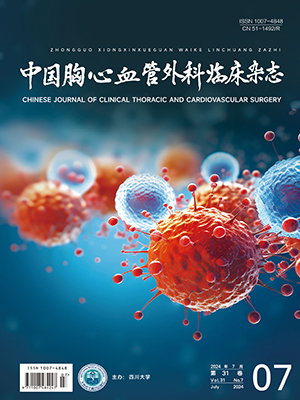Objective To investigate the effects on myocardial perfusion of simultaneous antegrade/retrograde cardiopiegia (SARC) through a single coronary artery and coronary sinus (CS). Methods SARC was conducted in isolated pig hearts through CS in conjunction with the left anterior descending (LAD), the left circumflex (LCX), or the right coronary artery (RCA) respectively. After injecting magnetic resonance (MR) contrast agent (gadolinium diethyienetriamine pentaacetic acid, Gd-DTPA) into arterial or venous route, the distribution of Gd-DTPA with magnetic resonance imaging(MRI) was monitored and the effluent from the venting coronary arteries to assess the efficacy of SARC for myocardial perfusion was measured. Results Injection of Gd-DTPA into a perfusing artery during SARC resulted in increased signal intensity not only in the territory of the perfusing artery but also in the areas normally served by the other two venting coronary arteries (including the right ventrieuiar free wall). With Gd DTPA given into the CS during SARC, the myocardium in the territories of the two venting coronary arteries was lightened. Signal intensity of the myocardium in the perfusing artery territory and right ventricuiar free wall remained unchanged. Moreover, a significant amount of effluent was collected from the venting coronary arteries during SARC: the LAD 10.5-17.7 ml/min; LCX 9.7-15.2 ml/min, and RCA 4.7-7.8 ml/min. Conclusion SARC through a single coronary artery and CS can provide homogeneous perfusion to the entire heart and is sufficient to prevent ischemic injury in the myocardium normally supported by the venting coronary arteries.
Citation: LI Gang,TIAN Weichen,LI Junquan,et al .. Experimental Study of Simultaneous Antegrade/Retrograde Cardioplegia Through a Single Coronary Artery and Coronary Sinus. Chinese Journal of Clinical Thoracic and Cardiovascular Surgery, 2006, 13(5): 331-334. doi: Copy




